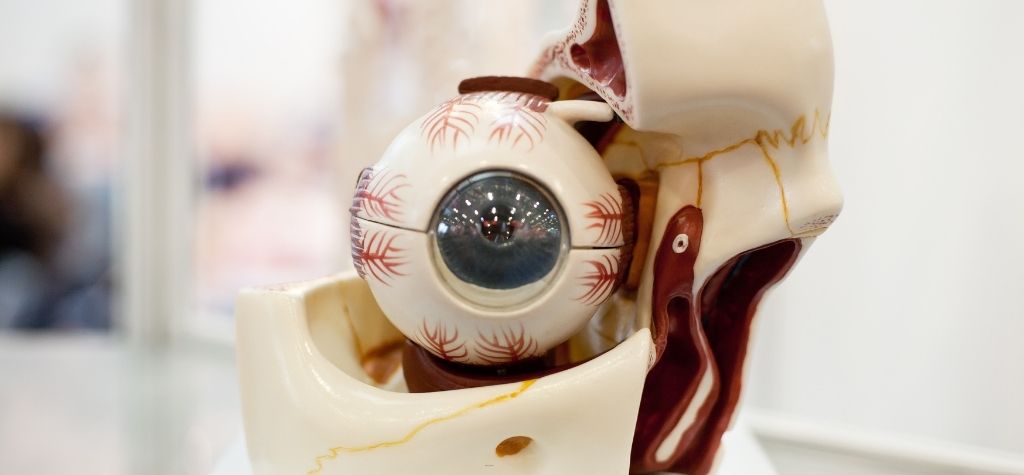From Science Fiction to Reality
Imagine waking up unable to see the face of a loved one. Until recently, blindness due to retinal diseases meant a life without central vision. Decades ago the television show The Bionic Woman teased viewers with futuristic prosthetic eyes that let its heroine see things ordinary people couldn’t. Today, scientists are turning that fiction into reality. Bionic eyes — advanced devices that stimulate remaining visual pathways — are helping a small but growing group of people regain partial sight. This article takes you on a journey through the science behind bionic eyes, the devices available today, the challenges they face and the hope they offer for tomorrow. Written in a conversational style, each section builds on the previous one and ends with practical insights.
Defining Bionic Eyes

A bionic eye is a medical device that replaces or bypasses damaged light‑sensing cells to create a form of artificial vision. Unlike simple prosthetic eyes used for cosmetic purposes, bionic eyes contain electronic components that interface with the nervous system. They can be broadly categorized into two types:
- Retinal implants: microchips placed on or under the retina to stimulate surviving retinal cells.
- Cortical implants: electrode arrays placed on the visual cortex to bypass the eye entirely.
Scientists have created implantable devices that restore partial sight in people with severe vision loss. These devices fall into two categories: retinal implants or “artificial retinas,” and brain‑chip implants. Early trials with a small number of participants show that the systems are safe and can allow people to perform basic daily tasks like detecting a doorway.
Why Artificial Vision Is Needed
Blindness caused by degeneration of photoreceptors — the light‑sensitive cells in the retina — affects millions worldwide. Retinitis pigmentosa, age‑related macular degeneration (AMD) and other inherited retinal diseases destroy photoreceptors, leaving people with little or no light perception. Conventional treatments, such as vitamin therapy or anti‑VEGF injections, cannot restore vision once photoreceptors are lost. Bionic eyes aim to replace lost function by delivering electrical stimulation directly to surviving retinal or cortical cells.
A Brief History of Bionic Eye Technology

Early Experiments
Electrical stimulation of the retina was first explored in operating rooms in the 1980s. Surgeons discovered that applying small probes to the retinal surface elicited flashes of light (phosphenes) in blind patients. This observation proved that the visual pathway could be artificially activated and inspired researchers to develop micro‑electrode arrays. These early trials showed that blind volunteers could perceive simple spots of light when electrodes were stimulated. However, turning these findings into a portable device took decades of engineering progress.
Argus I and Argus II — The First Commercial Bionic Eyes
The Argus II Retinal Prosthesis System, developed by Second Sight Medical Products (now part of Vivani), became the first commercially available bionic eye. Approved under a Humanitarian Device Exemption by the U.S. Food and Drug Administration in 2013, Argus II targeted people with severe blindness due to retinitis pigmentosa. It consisted of three main parts:
- A camera mounted on a pair of glasses captured live video.
- A body‑worn video processing unit converted images into electrical signals.
- A 60‑electrode array surgically implanted on the retina delivered pulses of electricity to stimulate retinal nerve cells.
Because Argus II could only produce 60 dots of light, the resulting images were crude; a healthy human eye contains about one million photoreceptors. Nonetheless, the system restored the ability to perform basic tasks. People with retinitis pigmentosa who previously could see little or no light were able to read large letters, locate moving objects or people and detect sidewalk curbs. The device offered little benefit for AMD patients, whose side vision remained better than the 60‑pixel prosthetic image. Second Sight discontinued the Argus II in 2019, but it proved that prosthetic vision could help blind individuals navigate the world.
The Bionic Eye System (Australia)
Researchers at Bionic Vision Technologies (BVT) in Australia have been developing a suprachoroidal retinal implant that sits behind the retina rather than on top of it. Their second‑generation implant uses a 44‑electrode array inserted into the suprachoroidal space. A camera on glasses captures live images, which are sent to a data processor and then transmitted to the implant wirelessly via a scalp‑mounted stimulator. During trials, all four participants implanted with this device experienced no serious adverse effects for over 2.5 years. Functionality tests showed that 97 % of electrodes remained functional and the implants remained in place. Participants reported improved localisation abilities, better mobility and orientation, and enhanced motion discrimination. Even at home, they could traverse obstacles, detect nearby people and explore unfamiliar environments, illustrating improved quality of life. These findings show the potential of suprachoroidal implants as a safer and more stable alternative to epiretinal implants.
The PRIMA Vision System – A Wireless Photovoltaic Implant
The PRIMA Vision System, developed by Pixium Vision and later acquired by Science Corporation, represents a major advance in bionic eye technology. In 2017 a first‑in‑human trial in France implanted a 378‑pixel photovoltaic chip under the retina. A small projector built into augmented‑reality glasses sends infrared signals to the chip. The chip acts like a tiny solar panel: it powers itself with light, converts patterns into electrical signals and stimulates the surviving bipolar cells in the retina. Because the implant is wireless and does not block natural vision, patients can integrate prosthetic and residual vision. Controls on the system allow users to adjust image brightness and zoom.
A major advantage of PRIMA is its higher electrode count compared with Argus II (378 pixels versus 60). This results in more detailed images and the ability to adjust brightness and zoom. Early trials in Europe showed that participants could read 4.6 more lines on an eye chart six months after implantation, and some improved by nearly 12 lines. Participants regained abilities like recognising playing cards and completing crossword puzzles. Importantly, the implants remained stable under the retina after two years and did not cause loss of peripheral vision. By June 2025 the European clinical trial had been completed, and Science Corporation had applied for regulatory approval in Europe.
An international pivotal trial called PRIMAvera enrolled 38 participants, most in Europe, and reported that PRIMA produced the best prosthetic visual acuity to date. Participants experienced significant improvements in visual acuity. Some could read letters, numbers and even longer words. PRIMA’s next‑generation version aims to increase pixel density even further, suggesting that future implants may restore more detailed vision.
The PRIMA Trial in Context
PRIMA’s success must be considered against its limitations. The current implant provides form vision but not full colour or high‑resolution detail. Patients must undergo rigorous training to interpret the artificial signals. Additionally, while improvements in acuity are statistically significant, participants still rely on assistive devices. The system also requires bulky glasses and a processor unit, though newer versions may be sleeker. Understanding these trade‑offs helps set realistic expectations for those considering bionic eye technology.
Other Retinal Implant Technologies
Researchers continue to explore new designs beyond PRIMA and Argus II:
- Artificial retina nanowire systems: A 2020 Nature paper described an artificial eye built with extremely tiny light‑sensing nanowires packed even more tightly than natural photoreceptor cells. The authors noted that connecting the artificial eye to the optic nerve or visual cortex would take years of additional research.
- Brain‑mounted cameras: Scientists have already created systems that allow some people to see light again after retinal disease. Most involve a camera on glasses that transmits images to an implant, which then stimulates the retina.
The field continues to evolve rapidly, with new materials, electrode designs and wireless technologies promising improvements in image quality and safety.
How Bionic Eye Systems Work

To appreciate the technology’s potential, it helps to understand how a typical bionic eye works. Although designs vary, most systems share four core components:
1. External Camera and Glasses
A small digital camera captures the visual scene. It is usually mounted on a pair of glasses so the camera moves with the user’s head. In some systems, the camera is embedded in augmented‑reality glasses that also house a mini‑projector. These glasses are essential for capturing and processing visual information, serving as a critical part of post‑implantation setup.
2. Processing Unit
The captured video is sent to a pocket‑sized computer that processes the images. The computer simplifies, magnifies or adjusts contrast and converts the scene into a pattern of electrical signals suitable for the implant. In PRIMA, the processor also controls brightness and zoom settings.
3. Implant
The implant is either placed on, behind or under the retina (epiretinal, suprachoroidal or subretinal) or on the visual cortex. It comprises an array of tiny electrodes that deliver controlled electrical pulses to stimulate neurons. For example:
- The Argus II used a 60‑electrode array on the retina.
- The Bionic Eye System uses a 44‑electrode suprachoroidal array.
- The PRIMA uses a 378‑pixel subretinal photovoltaic chip.
- The Orion cortical implant uses 60 electrodes placed on the visual cortex.
- The Intracortical Visual Prosthesis (ICVP) uses 400 microelectrodes implanted into the cortical surface.
4. Brain Integration and Training
Once stimulated, the retina’s ganglion cells or the visual cortex send signals to the brain. However, the patterns produced by implants do not naturally match the brain’s expectations. Patients must undergo visual rehabilitation to interpret the spots of light and integrate them with any remaining natural vision. In PRIMA, researchers observed that the brain merges prosthetic and natural vision into one continuous image.
Training programs include exercises to recognise letters and numbers, navigate obstacles and perform daily tasks. Over time, many users learn to interpret the electrical patterns, although the resolution remains low compared with normal vision.
Brain Implants: When the Retina Isn’t Enough

Retinal implants work only when the optic nerve and visual cortex are intact. For individuals with optic nerve damage, traumatic eye injury or complete retinal degeneration, cortical implants offer an alternative.
Orion Visual Cortical Prosthesis System
The Orion system from Cortigent (formerly Second Sight) evolved from the Argus II to bypass the eye entirely. It uses a 60‑electrode array placed on the occipital lobe (the brain’s visual cortex). A camera on glasses sends video to a processor; signals are then wirelessly transmitted to the implant. Electrode activation stimulates the visual cortex, creating perceptions of light patterns that patients must learn to interpret. Because Orion bypasses the eye, it could benefit people with vision loss from glaucoma, optic neuropathies, diabetic eye disease or trauma.
A feasibility study began in 2017 with six participants at the University of California, Los Angeles and Baylor College of Medicine. By 2023 three participants remained, reporting no device malfunctions at five years post‑implantation. One participant experienced a seizure within three months, but it resolved without permanent harm. When tested, all five participants (at three years) performed better at localising a lit square and identifying the direction of a line when the device was on versus off. In-home assessments showed that participants navigated sidewalks or sorted laundry more effectively with the device turned on. These results suggest that cortical implants can restore limited functional vision, but the technology remains experimental.
Intracortical Visual Prosthesis (ICVP) Project
The Intracortical Visual Prosthesis project, led by the Illinois Institute of Technology, uses 25 implanted microchip modules with 16 electrodes each — 400 electrodes in total. Signals from a camera on glasses are transmitted directly to these microchips, bypassing the need for bulky receiver packages. In 2024 researchers reported two years of successful testing in the first person to receive the implant; the participant regained the ability to navigate and perform basic tasks. Ongoing trials aim to recruit more participants and assess safety and efficacy.
Neuralink’s “Blindsight”
Neuralink, known for its brain‑computer interface research, is testing Blindsight — a brain implant designed to restore vision by stimulating the visual cortex. The company has approval for early human studies in the U.S., Canada, the U.K. and the EU, with plans to implant the device in volunteers by 2026. The chip uses 36 flexible threads containing 32 electrodes each (over 3,000 electrodes). A camera on glasses captures images and sends them to a smartphone, which processes the images and wirelessly transmits the signals to the brain chip. Outside experts note that a high number of electrodes does not guarantee high‑quality images, and rigorous clinical trials are needed.
Strengths and Limitations of Bionic Eyes

Benefits and Achievements
- Restoration of functional vision: Bionic eyes allow people to detect light, perceive shapes, read large letters and navigate spaces. In PRIMA trials, participants regained the ability to read letters and numbers and even play cards.
- Improved independence: Users of the Bionic Eye System could safely traverse obstacles and explore unfamiliar environments without assistance.
- Brain‑vision integration: PRIMA users combine prosthetic vision with residual peripheral vision to form a continuous image.
- Potential for those with optic nerve damage: Cortical implants like Orion and ICVP bypass the eye, offering hope for individuals who cannot benefit from retinal implants.
Challenges and Limitations
- Low resolution: Current devices produce pixelated images. Argus II offered 60 pixels; PRIMA offers 378 but still falls far short of normal visual acuity.
- Training demands: Users must learn to interpret electrical patterns. Visual rehabilitation can be time‑consuming and may not lead to natural vision.
- Surgical risks: Implantation involves complex surgery and carries risks of infection or device failure. In PRIMA trials, some serious adverse events were procedure‑related, although none were caused by the device itself.
- Device durability: Long‑term stability remains uncertain. Some participants had devices removed due to complications or personal choice.
- Cost and accessibility: Bionic eye systems are expensive and not widely available. Access may be limited to clinical trials in certain countries.
Ethical and Societal Considerations
- Expectations versus reality: Media coverage sometimes portrays bionic eyes as miracle cures. It is important to communicate that these devices currently provide limited, low‑resolution vision and require intensive training.
- Equity of access: Ensuring that advances benefit individuals worldwide, not just those in wealthy countries, will be a challenge.
- Data privacy: Some devices transmit video to external processors or smartphones. Protecting user data and ensuring devices cannot be hacked is essential.
The Role of Artificial Intelligence in Bionic Eyes
Artificial intelligence (AI) is poised to enhance bionic eye systems. A 2025 review in the journal Eye and Brain analyzed 28 studies using AI in prosthetic vision. The review identified two main applications: image saliency extraction and matching electrical stimulation to perceived phosphenes. Of the 28 studies, 14 used artificial neural networks and 12 included model training. Most studies were conducted with simulated prosthetic vision, highlighting the need for real‑world testing. The authors concluded that AI algorithms show promise in optimising prosthetic vision, particularly through enhanced image saliency extraction and stimulation strategies, but further development and clinical validation are essential.
Practical AI Applications
- Real‑time image enhancement: AI can analyse incoming video and emphasise important features (e.g., doorways, obstacles) while suppressing background noise. This could help users interpret scenes more quickly.
- Adaptive stimulation patterns: Machine‑learning models could adjust stimulation parameters based on user feedback to optimise perception.
- Predictive maintenance: AI could monitor device performance and predict when maintenance or recalibration is needed.
- Personalised training: Algorithms might tailor rehabilitation exercises based on how an individual interprets phosphenes, accelerating learning.
The Future: What Comes Next?

Advances on the Horizon
- Higher electrode counts: Increasing the number of electrodes could improve resolution. Next‑generation PRIMA implants aim for higher pixel density.
- Wireless power and communication: Photovoltaic implants like PRIMA eliminate bulky wired components. Future devices may further miniaturise external hardware.
- Combined treatments: Suprachoroidal implants may be used alongside gene or stem‑cell therapies.
- Biocompatible materials: New electrodes and coatings could reduce inflammation and extend implant life.
- Brain–computer interfaces: Efforts like Neuralink’s Blindsight propose direct cortical stimulation with thousands of electrodes. If successful, these systems could restore some vision to people with no viable retinal tissue.
Open Questions
- Can bionic eyes restore colour vision? Currently, devices produce black‑and‑white or grayscale images. Colour perception requires stimulating different cone photoreceptor pathways, which remains a challenge.
- What is the maximum achievable resolution? Physical limits on electrode size and current spread may cap the resolution of prosthetic vision. Combining multiple implants or using optical methods could improve detail.
- How will patients adapt? Long‑term studies are needed to understand how the brain reorganises around artificial input and how rehabilitation protocols should evolve.
- Will costs decrease? For bionic eyes to benefit millions, manufacturing and surgical costs must come down. Public funding and insurance coverage will play a role in accessibility.
Actionable Takeaways for Patients and Families
- Set realistic expectations: Bionic eyes currently provide limited vision, such as recognising large letters, objects and movement. They do not restore normal sight.
- Consult specialists: Only certain forms of blindness qualify for retinal or cortical implants. Candidates often have advanced retinitis pigmentosa or dry AMD with no central vision. Discuss options with a retinal specialist.
- Participate in clinical trials: Most devices are still experimental. Joining a trial may provide access to cutting‑edge technology and contribute to research.
- Be prepared for rehabilitation: Users need ongoing training to interpret artificial visual signals and integrate them with remaining vision.
- Stay informed: The field is evolving rapidly. New devices, improved implants and AI‑enhanced processing could offer better solutions in the coming years.
Conclusion
Bionic eyes mark a new era in the quest to restore sight. Pioneering devices like Argus II opened the door, proving that electrical stimulation can evoke vision. Suprachoroidal implants and wireless photovoltaic chips have improved stability and resolution. Cortical implants offer hope for those who cannot benefit from retinal devices. Yet today’s bionic eyes provide only a crude representation of the world. Advances in AI, materials science and neuroscience are needed to make artificial vision clearer, more intuitive and more widely available. As research continues, the dream of restoring sight for millions moves steadily from science fiction toward everyday reality.

